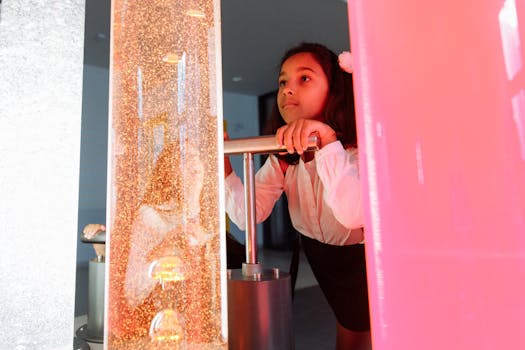
Engaging Minds: The Power of Interactive Science and Technology Displays
Takeaways:
- Interactive displays enhance learning by engaging visitors in hands-on experiences.
- These exhibits foster curiosity and innovation, making science accessible to all.
- Technological advancements continue to improve the interactivity and accessibility of displays.
In today’s fast-paced world, where technology permeates every aspect of our lives, the way we learn and understand science has also evolved. Interactive science and technology displays have emerged as pivotal tools in education, providing immersive experiences that make complex concepts more accessible and enjoyable. This article explores the significance of these displays, their impact on learning, and some exciting examples that illustrate their effectiveness.
What Are Interactive Science and Technology Displays?

Typically found in museums, science centers, and educational institutions, these displays range from simple touch-screen interfaces to complex simulations and virtual reality experiences. They appeal to a wide audience, from children to adults, making science and technology more approachable and enjoyable.
The Importance of Interactivity in Learning

- Enhanced Engagement: Interactive displays capture attention and stimulate curiosity. Visitors are more likely to explore and ask questions when they can physically engage with the material.
- Individualized Learning: These exhibits allow users to learn at their own pace. Each person can interact with the display in a way that suits their learning style, making the experience more personalized.
- Collaboration and Social Learning: Many interactive displays encourage group participation, fostering teamwork and discussion among visitors. This social aspect of learning is vital for developing critical thinking skills.
- Real-World Applications: By simulating real-life scenarios, interactive displays help learners connect theoretical concepts with practical applications, enhancing their understanding of how science and technology impact everyday life.
Examples of Innovative Interactive Displays

- Exploratorium (San Francisco, USA): This museum is famous for its hands-on exhibits that encourage experimentation. The Tactile Dome, for instance, invites visitors to navigate through a dark maze by touch, offering a unique sensory experience that teaches spatial awareness and navigation.
- Science Museum (London, UK): The Wonderlab gallery features over 50 interactive exhibits that inspire curiosity about science. Visitors can experiment with forces, light, and sound, making learning a fun and memorable experience.
- Tech Interactive (San Jose, USA): This science and technology center houses numerous interactive exhibits, including a robotics workshop where visitors can design and program their own robots, fostering creativity and problem-solving skills.
- Giant’s Causeway Visitor Centre (Northern Ireland): The center features interactive displays that explore the geology and mythology of the area. Visitors can engage with augmented reality exhibits that bring the ancient landscape to life.
The Future of Interactive Displays in Science and Technology

Moreover, as educational institutions and organizations recognize the importance of STEM (Science, Technology, Engineering, and Mathematics) education, the demand for interactive displays will likely increase. These exhibits not only facilitate learning but also inspire the next generation of innovators and problem solvers.
Conclusion







